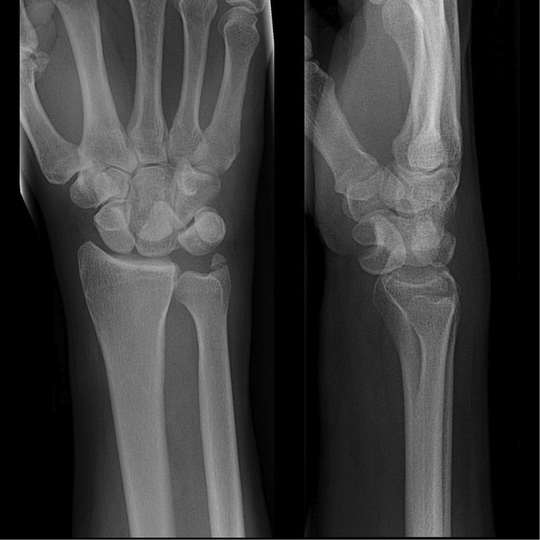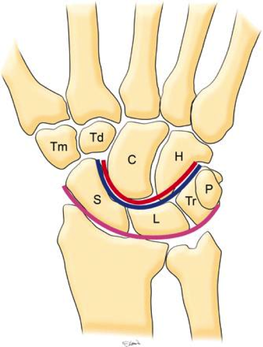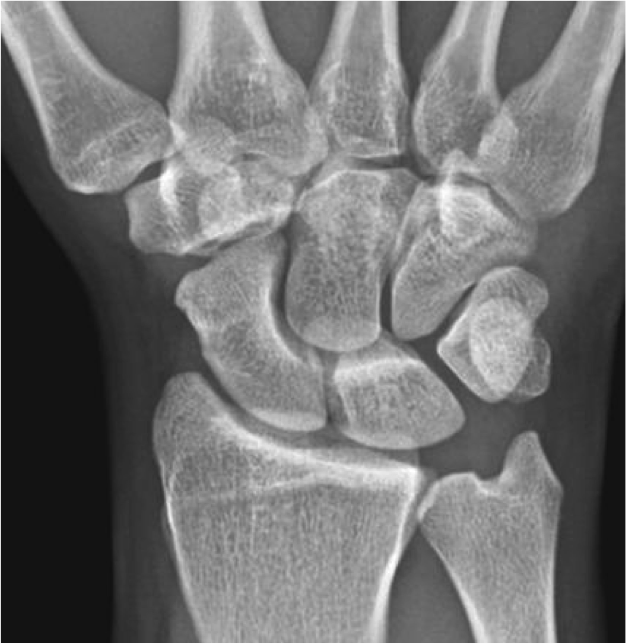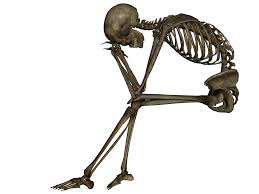|
HPI: Young male presents after a fall while skiing with right shoulder and wrist pain. PE: Obvious deformity of the right wrist. No abrasions or ecchymosis. Full thumb abduction, able to flex at DIP and PIP joint of all 5 fingers, full abduction of all 4 palmar fingers, 5/5 strength to finger grip. Unable to range wrist, elbow or glenohumeral joint secondary to pain. Normal sensation to pinprick and two point discrimination of all five fingers. 2+ radial pulse with normal cap refill. Imaging: Anatomy: - Normal wrist anatomy consists of two rows of bones: o Proximal row: Scaphoid, lunate, triquetrum, pisiform o Distal row: trapezium, trapezoid, capitate, hamate - Ligaments of the wrist: o Interosseous ligaments run between the carpal bones and stabilizes proximal carpal bones. o Intrinsic ligaments insert and originate among the carpal bones to internally stabilize them. o Extrinsic ligaments connect radius and ulna to the carpus. How to make diagnosis:
Treatment: o Require emergent closed reduction and splinting into sugar tong splint.
Pearls:
0 Comments
Your comment will be posted after it is approved.
Leave a Reply. |
Orthopedics BlogAuthorCMC ER Residents Archives
June 2018
Categories
All
Disclaimer: All images and x-rays included on this blog are the sole property of CMC EM Residency and cannot be used or reproduced without written permission. Patient identifiers have been redacted/changed or patient consent has been obtained. Information contained in this blog is the opinion of the author and application of material contained in this blog is at the discretion of the practitioner to verify for accuracy.
|




 RSS Feed
RSS Feed
